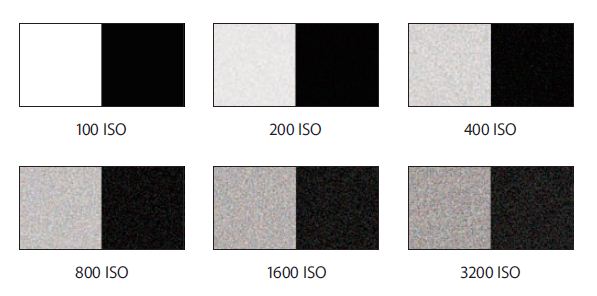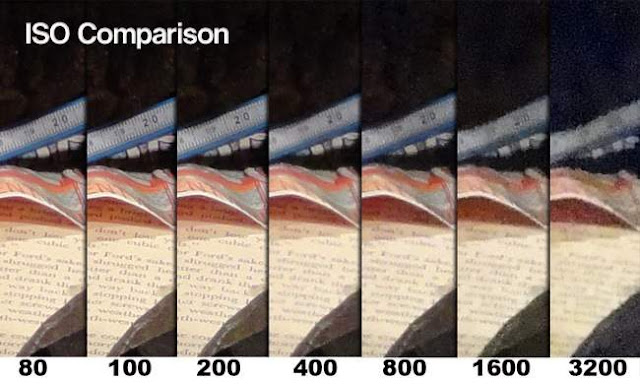What is ISO
Traditionally, the International Standards Organization (ISO) has provided a benchmark rating of the relative sensitivity of film. The higher the ISO rating, the more light sensitive a particular film is.
Higher ISO films require less light to record an image. The ISO rating has been redefined for digital cameras, indicating the image sensor’s sensitivity to light. Most DSLRs have ISO settings from 100 to 3200 ISO.
In today's digital photography ISO measures the sensitivity of the camera sensor. Used the same principle applies to what photographic film, getting lower ISO number, then it's also lowering the light sensitive to cameras, and then less grain or noise is generated.
High ISO settings typically used to get fast shutter speeds in low light conditions of the room or even in the dark, for example: the indoor sporting event and you want to freeze the motion of the action of the athletes, and the consequences are every shots will have noise.

At higher ISO settings (400 ISO and above), some cameras have difficulty maintaining consistent exposure for every single pixel in the image.
To increase the sensitivity of the digital image sensor in these situations, the camera amplifies the voltage received from each image sensor element prior to converting the signal to a digital value.
As the voltage signals from each element are amplified, so are anomalies within solid dark colors. This results in sporadic pixels with incorrect bright color values, also known as digital noise.
When you want to have full control over the camera, preferring ISO settings manually, you will find that it will affect the aperture and shutter speed, and its third regulation should be harmonized to get the proper exposure.
For example, if you intend to raise the ISO from 100 to 400 then you will get a better shutter speed or a smaller aperture.

It’s best to use as low an ISO as possible because higher ISO settings produce more “noise” (undesirable visible grain).
The general rule is: The lower the ISO, much better for the quality (if the shooting circumstances permit it).
ISO 100 is generally accepted as a normal ISO size and will give a satisfactory result, little noise or grain. Perform more often experiments with photographing using different ISO settings, see how it will impact your photos.